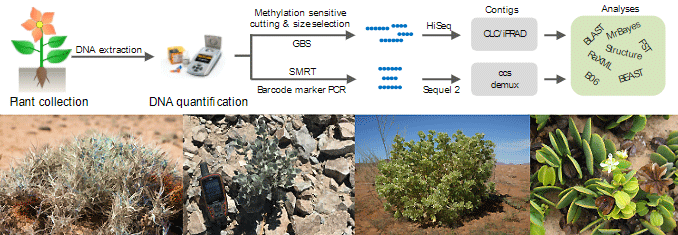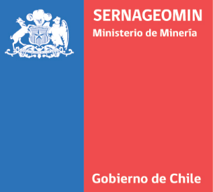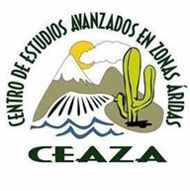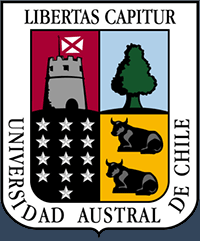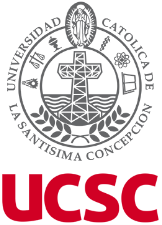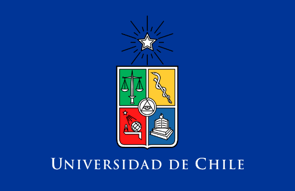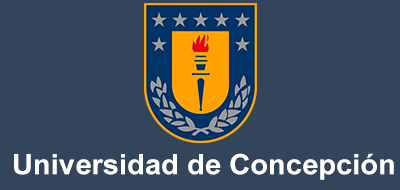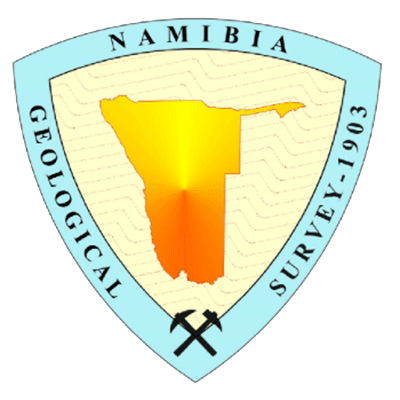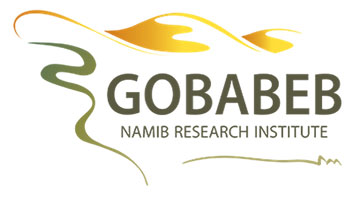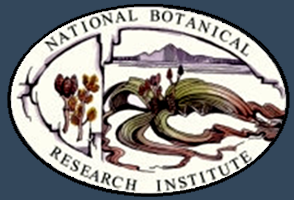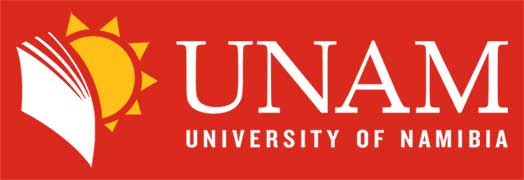Biogeographic history of plant communities
Research areas: Botany, Biodiversity, Historical Biogeography, Population genetics
Principal investigators: Prof. Dr. Dietmar Quandt, Prof. Dr. Marcus Koch, Dr. Dörte Harpke
Project Info: Phase 3
Based on our findings from phase 1 (historical biogeography) and phase 2 (population-level differentiation and interaction with abiotic parameters) two plant study systems, Tillandsia landbeckii and Huidobria fruticosa/chilensis, have been explored phylo-biogeographically and from an ecological perspective. We have shown that these two systems show typical adaptive strategies, but developed fundamentally different evolutionary solutions to cope with hyperarid conditions in the Chilean hyperarid Atacama Desert. While Tillandsia landbeckii as core species in the most hyperarid parts of the Atacama Desert is depending on fog occurrence and sand dune systems, the two vicariant Huidobria species (H. fruticosa and H. chilensis) show a broader distribution that is often linked to old ravine landscape structures in the coastal cordillera as well as the precordillera and depend on water resources other than fog. In addition, the multi seed Huidobria system allows to cross check the impact of seed strategies. We are now aiming to link biological processes and spatial/compositional patterning with environmental proxies limiting seed germination, plant establishment and growth, and we will (a) explore plant phenotypic plasticity and variation in the field and under controlled growth conditions (ex-situ), thereby focusing on temperature, humidity and carbon dioxide values. Those measures can be then directly linked with environmental proxies obtained and evidenced from field data (substrate characteristics, substrate moisture, 87Sr/86Sr isotopes and triple oxygen isotopes analyses as proxies for tracing water sources) and also cycling models developed by CRC research groups. A macro-scale evolutionary experiment (b) using a gene capture experiment and developing a timeline of independent and parallel evolution of epiarenic Tillandsia, will provide direct evidence for the onset of tillandsiales in the Chilean-Peruvian Atacama Desert, while transcriptomic approaches aiming at the Huidobria system are part of B07. Both approaches (a, b) will allow to integrate spatio-temporal models of important parameters affecting plant´s life with other CRC working groups focusing on climate, temperature, fog and dew occurrence, and drainage system, and develop a mechanistic understanding of present and past vegetation dynamics. Furthermore, our preliminary genetic and phenotypic data of both systems indicate different strategies to increase plant fitness and ensure survival on individual and meta-populational level adjusting phenotypic and genotypic diversity and plasticity with life history traits such as clonal and sexual propagation. Thereby allowing rapidly to cope with environmental change at the extreme limits of parameters affecting plants life. This hypothesis and concept of “frozen gene pools with maximized phenotypic plasticity” will be developed further during phase 3.
Phase 2
Biogeographic history of plant communities
Research areas: Botany, Biodiversity, Historical Biogeography, Population genetics
Principal investigators: Prof. Dr. Dietmar Quandt, Prof. Dr. Marcus Koch
B01 will continue to work on the spatio-temporal gene-flow between plant populations in the Atacama Desert, but on small-scale and spanning regional to local for subsequent extrapolation over larger regions, as preliminary data shows e.g. that vegetation growth and vegetation patterning of Tillandsia lomas at its dry limits in the Atacama Desert displays fine-scale response to various environmental parameters. Therefore we selected two species, Tillandsia landbeckii and Huidobria fruticosa, with different life forms and habitat requirements in order to link the colonization capacity and genetic diversity with environmental parameters, which are also in focus at other CRC projects (e.g., spatio-temporal dynamics of the fog system (A cluster projects), sand dynamics (C03), landscape evolution (C07) vegetation turnover and dating (D04, A02), water resources (D03), microbial diversity (B04)). Both species occur in habitats where we find the necessary joint critical mass with geomorphology, climate and geology. This will enable us in collaboration with B06 to develop a referenced local population model that can serve as template to extrapolate in a species-specific manner over the entire Northern Atacama. We (B01, B04 & B05) will also apply a metabarcoding approach of the top soil layer in order to identify options for N-fixation (cyanobacterial mats) and N-cycling as potential resource for terrestrial and rootless Tillandsias
In addition we plan to compare spatial patterns of phytodiversity, biogeographic history and evolution of the Atacama Desert flora (selected lineages) with the Namib Desert flora in near future. In preparation of comparisons with the Namib Desert we will use a project layout similar to that applied under B01 in the Atacama Desert (first and ongoing phase). Although both deserts share similar environmental factors the Namib Desert lacks a barrier in the east, enabling higher rates of historical gene flow and colonization rates that in return impact speciation. This is reflected by the range in ages of species establishment and speciation between >16 and 2 million years reported by recent studies. As, in contrast to the Atacama Desert flora, data for the historical biogeography and macroevolution of the Namib Desert flora is largely at hand, we will develop a focus on the spatio-temporal gene-flow (global and local) between plant populations in the Namib Desert for which backbone phylogenies are already published, such as Stipagrostis sabulicula, Monsonia ignorata, Kissenia capensis, the Lithops ruschiorum complex and the Aloidendron dichotomum complex. In the given context Kissenia capensis is of special interest, as it represents the Namib Desert counterpart of Huidobria fruticosa from the Atacama Desert and both species are already included in the new project B07 on desert transcriptomics.
Phase 1
Biogeographic history of plant communities
Research areas: Botany, Biodiversity, Historical Biogeography, Population genetics
Principal investigators: Prof. Dr. Dietmar Quandt, Prof. Dr. Marcus Koch
Biogeographic history of plant communities: The flora of the Atacama Desert is surprisingly diverse with ~ 550 species. Vegetation is largely restricted to the coastal range and the Andean foothills, which are separated by a virtually plant-free zone or absolute desert (Luebert & Pliscoff 2006). So far remarkably young ages for the diversification of the Atacama clades were demonstrated, which is at odds with the high age that is generally proposed for the desert ecosystem as such. Overall, only few dated phylogenies are available, precluding any generalizations. Also, the spatial patterns of phytodiversity, biogeographic history and evolution of the Atacama Desert flora are largely unknown, leading us to our central question: how have plants and vegetation evolved in this environment of extreme aridity and unpredictability (driving and limiting factors).
Background: The Atacama Desert has an exceedingly sparse vegetation cover overall, but harbors a range of endemic species adapted to the hostile conditions of the habitat. Few detailed studies on the flora and vegetation of the region are available. Vegetation dynamics are largely determined by rare and irregular precipitation events (Schulz et al. 2011). Scientific studies mainly focus on the Atacama Desert coastline, whereas the flora of the Andean alluvial fans has received little attention. Only few, very local studies have been published (Luebert & Pliscoff 2006). The coastal fog oasis and the Andean slope are the major northsouth biological corridors in this area, thus distribution and dispersal patterns at the Coastal and Andean ranges of the Atacama Desert are fundamental to an understanding of the origin and diversification of the Atacama Desert flora and the floristic interchange between Peru and Chile. While at the coastal range Peruvian and Chilean desert floras are highly dissimilar (Pinto & Luebert 2009), Schwarzer et al. (2010) document surprisingly high dispersal frequencies and distances in a range of taxa from the northern Andean Atacama into southern Peru. This might indicate a considerable degree of population connectivity even between apparently isolated and remote vegetation islands. This is underscored by population genetic studies in wild tomatoes (Städler et al. 2005, 2008; Stephan & Städler 2010), mostly distributed along the Andean Atacama Desert (Peralta et al., 2008). These studies show post-divergence gene flow between currently allopatric species and populations, suggesting secondary contact following allopatric divergence. Other population genetic studies tend to confirm this pattern for the coastal range (e.g., Luebert et al. 2014; Ossa et al. 2013; but see Viruel et al. 2012).
Publications
Project B1 - Publications
Articles
Jaeschke, A., 2024.
Evaluating the isotopic composition of leaf organic compounds in fog-dependent Tillandsia landbeckii across the coastal Atacama Desert: Implications for hydroclimate reconstructions at the dry limit.
Global and Planetary Change. 1 - 43.
Jaeschke, A., 2024.
Evaluating the isotopic composition of leaf organic compounds in fog-dependent Tillandsia landbeckii across the coastal Atacama Desert: Implications for hydroclimate reconstructions at the dry limit.
Global and Planetary Change. 1 - 43.
Vargas-Machuca, B., Wennrich, V., Melles, M., 2024.
Regional phytoliths from the Coastal Cordillera of the Atacama Desert, Chile, and their potential for paleoecological reconstructions.
Quaternary International. 1 - 11.
Anders, L., Koch, M., 2023.
Der Einfluss von Sandynamiken auf die Vegetation hyperarider Wüstenstandorte in der Atacama (Chile) am Beispiel der Tillandsiales..
Not published. 1 - 34.
Bratzel, F., Paule, J., Leebens-Mack, J., Leme, E. M., Forzza, R. C., Koch, M., Heller, S., Zizka, G., 2023.
Target-enrichment sequencing reveals for the first time a well-resolvedphylogeny of the core Bromelioideae (family Bromeliaceae).
TAXON. 1 - 17. DOI: 10.1002/tax.12831.
Hakobyan, A., Velte, S., Sickel, W., Quandt, D., Stoll, A., Knief, C., 2023.
Tillandsia landbeckii phyllosphere and laimosphere as refugia for bacterial life in a hyperarid desert environment.
Microbiome. 11 (246), 1 - 18. DOI: https://doi.org/10.1186/s40168-023-01684-x.
Jabbusch, S., Koch, M., 2023.
) High phenotypic variability and clonality – the adaptation potential of T. landbeckii under changing environmental conditions..
Not yet published. 1 - 85.
Peters, A., Koch, M., 2023.
Drowning in sand? - epiarenic Tillandsia landbeckii loma’s in the Chilean Atacama Desert.
Not yet published. 1 - 27.
Schmitz, J., Bechteler, J., Münker, C., 2023.
Leaf element composition of the desert shrub Huidobria chilensis (Loasaceae): potential correlation with genetic structure, leaf age and substrate element composition.
Bachelor Thesis. 1 - 84.
Stein, E., Koch, M., 2023.
Reticulate evolution in sympatrically growing species of epiarenic Tillandsia in Camaná, southern Peru: a case study..
Not published. 1 - 86.
Stein, E., Luque-Fernández, C., Kiefer, C., Möbus, J., Pauca-Tanco, G. A., Jabbusch, S., Harpke, D., Bechteler, J., Quandt, D., Villasante Benavides, F., Koch, M., 2023.
Climate-driven past and present interspecies gene flow may have contributed to shape microscale adaptation capacity in Tillandsia lomas in hyperarid south American desert systems.
Elsevier. 230 (104258), 1 - 19. DOI: https://doi.org/10.1016/j.gloplacha.2023.104258.
Agnes, M., Bechteler, J., 2022.
Technical and biological aspects of whole-genome assembly and analysis of Huidobria chilensis and H. fruticosa (Loasaceae) from the Atacama Desert in Chile.
Bachelor Thesis. 1 - 72.
Böhnert, T., Luebert, F., Merklinger, F. F., Harpke, D., Stoll, A., Schneider, J., Blattner, F. R., Quandt, D., Weigend, M., 2022.
Plant migration under long-lasting hyperaridity – phylogenomics unravels recent biogeographic history in one of the oldest deserts on Earth.
New Phytologist. 1 - 13. DOI: 10.1111/nph.18082.
Koch, M., Kiefer, C., Möbus, J., Quandt, D., Merklinger, F. F., Harpke, D., Villasante Benavides, F., 2022.
Range expansion and contraction of Tillandsia landbeckii lomas in the hyperarid Chilean Atacama Desert indicates ancient introgression and geneflow.
Perspectives in Plant Ecology, Evolution and Systematics. 56 (125689), 1 - 14. DOI: 10.1016/j.ppees.2022.125689.
Koch, M., Quandt, D., Siegmund, A., 2022.
Living at its dry limits: Tillandsiales in the Atacama Desert.
Plant Systematics and Evolution. 308 (11), 1 - 3. DOI: 10.1007/s00606-022-01804-4.
Mikulane, S., Siegmund, A., del Río, C., Koch, M., Osses, P., García, J.-L., 2022.
Remote sensing based mapping of Tillandsia fields - A semi-automatic detection approach in the hyperarid coastal Atacama Desert, northern Chile.
Journal of Arid Environments. 205 (104821), 1 - 11. DOI: 10.1016/j.jaridenv.2022.104821.
Zilken, P., Bechteler, J., Quandt, D., 2022.
Evolutionary history of Copiapoa (Cactaceae) in the Atacama Desert based on a plastid marker dataset.
Bachelor Thesis. 1 - 47.
Alfaro, F. D., Manzano, M., Almiray, C., García, J.-L., Osses, P., del Río, C., Vargas, C., Latorre, C., Koch, M., Siegmund, A., Abades, S., 2021.
Soil bacterial community structure of fog‐dependent Tillandsia landbeckii dunes in the Atacama Desert.
Plant Systematics and Evolution. 307 (56), 1 - 11. DOI: 10.1007/s00606-021-01781-0.
Böhnert, T., Weigend, M., Merklinger, F. F., Quandt, D., Luebert, F., 2021.
Historical assembly of Zygophyllaceae in the Atacama Desert.
Frontiers of Biogeography. 12 (3), 1 - 12. DOI: 10.21425/F5FBG45197.
del Río, C., Lobos-Roco, F., Latorre, C., Koch, M., García, J.-L., Osses, P., Lambert, F., Alfaro, F., Siegmund, A., 2021.
Spatial distribution and interannual variability of coastal fog and low clouds cover in the hyperarid Atacama Desert and implications for past and present Tillandsia landbeckii ecosystems.
Plant Systematics and Evolution. 307 (58), 1 - 23. DOI: 10.1007/s00606-021-01782-z.
García, J.-L., Lobos-Roco, F., Schween, J., del Río, C., Osses, P., Vives, R., Pezoa, M., Siegmund, A., Latorre, C., Alfaro, F., Koch, M., 2021.
Climate and coastal low‑cloud dynamic in the hyperarid Atacama fog Desert and the geographic distribution of Tillandsia landbeckii (Bromeliaceae) dune ecosystems.
Plant Systematics and Evolution. 307 (57), 1 - 22. DOI: 10.1007/s00606-021-01775-y.
Koch, M., Stock, C., Kleinpeter, D., del Río, C., Osses, P., Merklinger, F. F., Quandt, D., Siegmund, A., 2021.
Vegetation growth and landscape genetics of Tillandsia lomas at their dry limits in the Atacama Desert show fine-scale response to environmental parameters.
Ecology and Evolution. 10, 1 - 15. DOI: DOI: 10.1002/ece3.6924.
Merklinger, F. F., Zheng, Y., Luebert, F., Harpke, D., Böhnert, T., Stoll, A., Koch, M., Blattner, F. R., Wiehe, T., Quandt, D., 2021.
Population genomics of Tillandsia landbeckii reveals unbalanced genetic diversity and founder effects in the Atacama Desert.
Global and Planetary Change. 184, 1 - 11. DOI: 10.1016/j.gloplacha.2019.103076.
Merklinger, F. F., Böhnert, T., Arakaki, M., Weigend, M., Quandt, D., Luebert, F., 2021.
Quaternary diversification of a columnar cactus in the driest place on earth.
Americal Journal of Botany. 108 (2), 1 - 16. DOI: 10.1002/ajb2.1608.
Möbus, J., Kiefer, C., Quandt, D., Barfuss, M., Koch, M., 2021.
Setting the evolutionary timeline: Tillandsia landbeckii in the Chilean Atacama Desert.
Plant Systematics and Evolution. 307 (3), 1 - 12. DOI: 10.1007/s00606-021-01760-5.
Stoll, A., Harpke, D., Schütte, C., Jimenez, L., Letelier, L., Blattner, F. R., Quandt, D., 2021.
Genetic consequences of human driven habitat fragmentation on endangered Atacama Desert shrub Balsamocarpon brevifolium Clos..
Global and Planetary Change. 184, 1 - 10. DOI: 10.1016/j.gloplacha.2019.103059.
Villasante Benavides, F., Pauca-Tanco, G. A., Luque-Fernández, C., Del Pilar Quispe-Turpo, J., Villegas Paredes, L. N., Siegmund, A., Koch, M., 2021.
Distribution patterns, ecological niche and conservation status of endemic Tillandsia purpurea along the Peruvian coast.
Plant Systematics and Evolution. 307 (52), 1 - 14. DOI: 10.1007/s00606-021-01773-0.
Ruhm, J., Böhnert, T., Weigend, M., Merklinger, F. F., Stoll, A., Quandt, D., Luebert, F., 2020.
Plant life at the dry limit-Spatial patterns of floristic diversity and composition around the hyperarid core of the Atacama Desert.
PLoS ONE. 15 (5), 1 - 21. DOI: 10.1371/journal.pone.0233729.
Böhnert, T., Luebert, F., Ritter, B., Merklinger, F. F., Stoll, A., Schneider, J., Quandt, D., Weigend, M., 2019.
Origin and diversification of Cristaria (Malvaceae) parallel Andean orogeny and onset of hyperaridity in the Atacama Desert.
Global and Planetary Change. 181, 1 - 8. DOI: 10.1016/j.gloplacha.2019.102992.
Koch, M., Kleinpeter, D., Auer, E., Siegmund, A., del Río, C., Osses, P., García, J.-L., Marzol, M., Zizka, G., Kiefer, C., 2019.
Living at the dry limits: ecological genetics of Tillandsia landbeckii lomas in the Chilean Atacama Desert.
Springer. 305, 1041 - 1053. DOI: https://doi.org/10.1007/s00606-019-01623-0.
Sancho, G., Katinas, L., Viera Barreto, J., Moreira-Muñoz, A., Luebert, F., 2019.
Phylogenetic relationships and generic reassessment of Proustia and allies (Compositae: Nassauvieae).
Taxon. 67 (1), 113 - 129. DOI: 10.12705/671.7.
Böhnert, T., Luebert, F., Weigend, M., 2018.
Atriplex retusa, the correct name for A. deserticola (Chenopodiaceae; Amaranthaceae sensu APG).
Phytotaxa. 373 (1), 95 - 98. DOI: 10.11646/phytotaxa.373.1.6.
Event Paper
Jaeschke, A., Böhm, C., Reyers, M., Merklinger, F. F., Bernasconi, S., Schefuß, E., Kusch, S., Rethemeyer, J., 2019.
Present and past distribution of fog-dependent Tillandsia vegetation in the hyperarid Atacama Desert.
Geophysical Research Abstracts. Proc. of EGU General Assembly 2019, 21 (EGU2019-9332), April 07 - 12, 2019, Vienna, 1 - 1.
Data
Project B1 - Research Data
Jaeschke, A., 2024.
Evaluating the isotopic composition of leaf organic compounds in fog-dependent Tillandsia landbeckii across the coastal Atacama Desert: Implications for hydroclimate reconstructions at the dry limit.
CRC1211 Database (CRC1211DB).
Stein, E., Jäger, D., Quandt, D., Koch, M., 2024.
High resolution Digital Terrain Models (DTM) of Tillandsiales in the Chilean Atacama Desert: The Caldera study field.
CRC1211 Database (CRC1211DB). DOI: 10.5880/CRC1211DB.69.
Stein, E., Jäger, D., Quandt, D., Koch, M., 2024.
High resolution Digital Terrain Models (DTMs) of Tillandsiales in the Chilean Atacama Desert: The Arica study field..
CRC1211 Database (CRC1211DB). DOI: 10.5880/CRC1211DB.70.
Hakobyan, A., Knief, C., 2024.
Run information datasheet for PRJEB57843 project.
CRC1211 Database (CRC1211DB).
Ferchichi, K., Böhnert, T., Ritter, B., Harpke, D., Stoll, A., Morales Sanhueza, P., Fiedler, S., Mu, F., Bechteler, J., Koch, M., Wiehe, T., Quandt, D., 2023.
GLOPLACHA-D-2300471_supplementaryData.
CRC1211 Database (CRC1211DB). DOI: 10.5880/CRC1211DB.67.
Ferchichi, K., Böhnert, T., Ritter, B., Harpke, D., Stoll, A., Morales Sanhueza, P., Fiedler, S., Mu, F., Bechteler, J., Koch, M., Wiehe, T., Quandt, D., 2023.
Variant Call Format (VCF) File representing SNPs Data of 183 individuals from 11 populations for H.chilensis species.
CRC1211 Database (CRC1211DB). DOI: 10.5880/CRC1211DB.66.
Ruhm, J., Böhnert, T., Weigend, M., Stoll, A., Merklinger, F., Quandt, D., Luebert, F., 2020.
Spatial floristic data from the Atacama and Peruvian Desert – Version 2.
CRC1211 Database (CRC1211DB). DOI: 10.5880/CRC1211DB.33.
Böhnert, T., Weigend, M., Merklinger, F., Quandt, D., Luebert, F., 2019.
cpDNA alignments and R-skript for Historical Biogeography of Zygophyllaceae in the Atacama Desert.
CRC1211 Database (CRC1211DB). DOI: 10.5880/CRC1211DB.32.
Ruhm, J., Böhnert, T., Weigend, M., Stoll, A., Merklinger, F., Quandt, D., Luebert, F., 2019.
Spatial floristic data from the Atacama and Peruvian Desert.
CRC1211 Database (CRC1211DB). DOI: 10.5880/CRC1211DB.29.
Merklinger, F., Zheng, Y., Luebert, F., Harpke, D., Böhnert, T., Stoll, A., Koch, M., Blattner, F., Wiehe, T., Quandt, D., 2019.
Sample locations and GBS output files for analysing the population genomics of Tillandsia landbeckii.
CRC1211 Database (CRC1211DB). DOI: 10.5880/CRC1211DB.27.
Böhnert, T., Luebert, F., Ritter, B., Merklinger, F., Stoll, A., Schneider, J., Quandt, D., Weigend, M., 2019.
cpDNA alignments and phylogenetic trees of Cristaria (Malvaceae) from the Atacama Desert.
CRC1211 Database (CRC1211DB). DOI: 10.5880/CRC1211DB.26.




